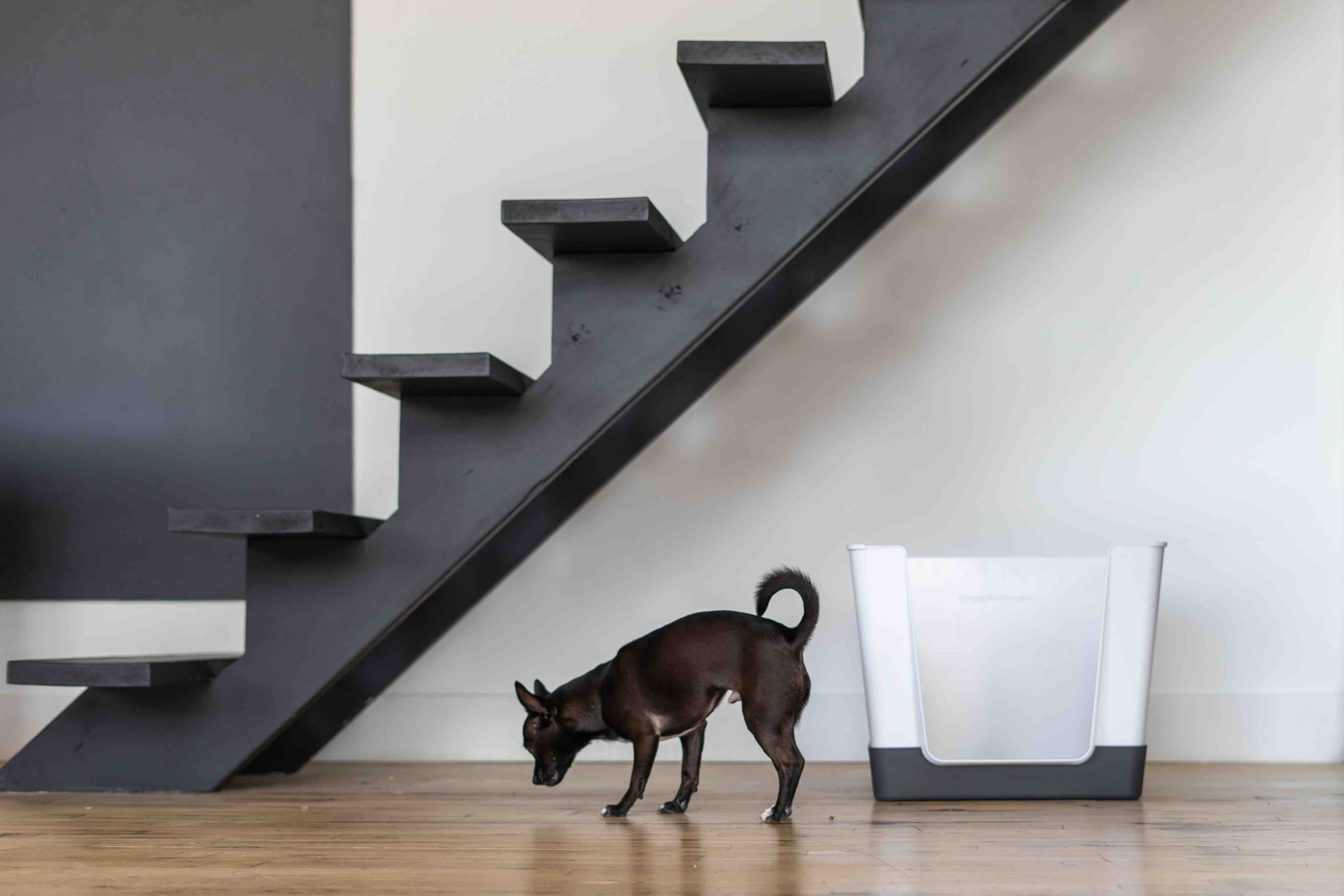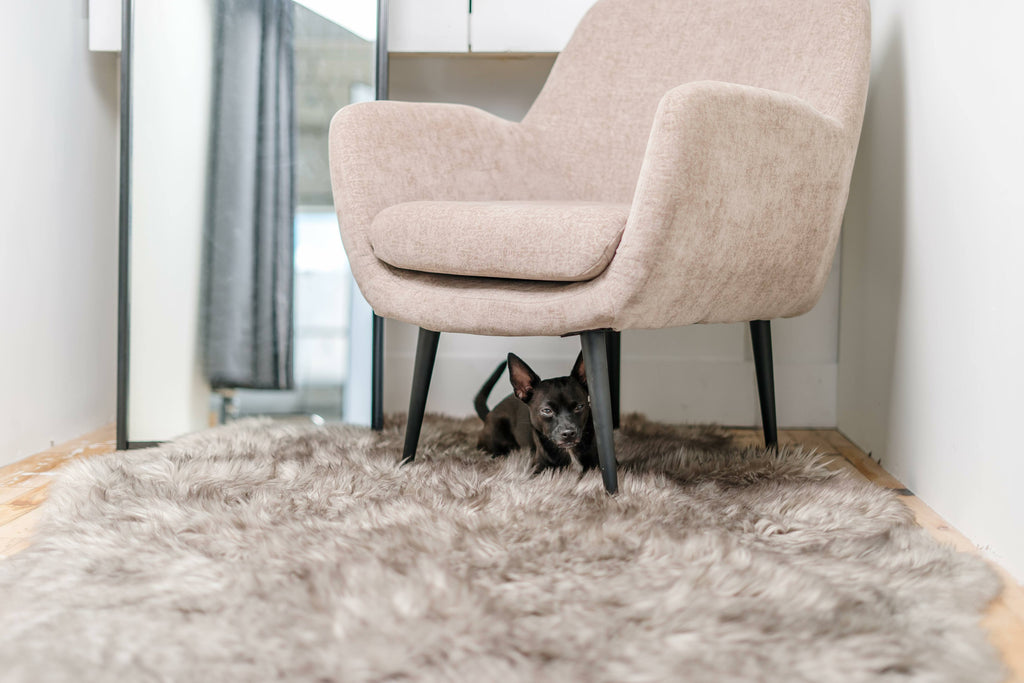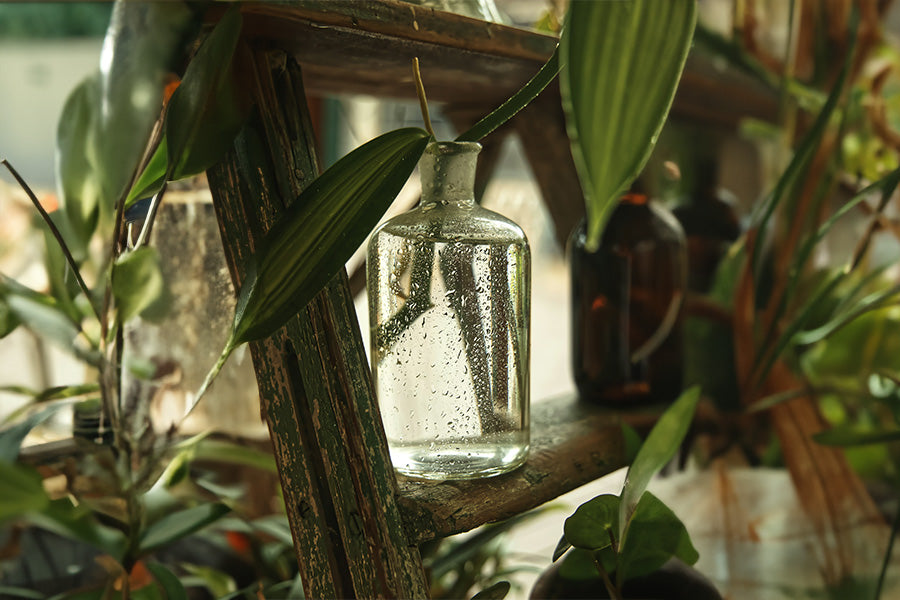A Step-by-Step Guide to Effective Dog House Training

Training your furry friend to eliminate in the right place is an essential part of being a responsible pet parent.
How to train a puppy to eliminate in the appropriate place is a cornerstone of responsible pet ownership. Effective dog house training not only keeps your space clean—it nurtures a lifelong bond based on structure, trust, and comfort.
This expanded guide covers house training tips and potty training techniques with a focus on positive reinforcement dog training, crate training, indoor potty training and problem-solving strategies for accidents or setbacks. Now, here's everything you need to know about how to train a puppy.
Why Supervision Matters
Supervision is a crucial element that significantly influences the success of early dog house training. Especially when training small dogs or house training an older dog, it’s important to understand your puppy or dog’s bathroom patterns and respond accordingly. In the early stages of puppy potty training, remember that young dogs have limited bladder control. A helpful guideline: puppies can generally hold their bladder for about one hour, plus one hour for every month of age. For example, a three-month-old pup may only last three to four hours before needing relief.
Without proper supervision, dogs may eliminate indoors, reinforcing unwanted behaviors. To avoid this and begin effective dog training, keep your dog in the same room as you whenever possible. Watch for signs like sniffing, circling, or heading to a corner—common cues they need to go. Immediately guide them to their designated spot, whether it’s an outdoor potty area or an indoor dog litter box.
This level of vigilance is key to how to stop indoor peeing and avoid the need for future dog accident cleanup. Supervision supports positive reinforcement dog training, as it allows you to reward correct behaviour in real time. Whether you’re training your dog from scratch or reinforcing good habits, staying consistent is one of the most valuable dog training tips you can follow.
Understanding When Puppies Need to Relieve Themselves
A structured routine plays a vital role in house training a dog, especially when using potty training techniques grounded in consistency. Puppies thrive on predictability, and learning how to potty train a dog effectively means anticipating their needs and being ready to respond.
Most puppies will need to go shortly after common daily activities—eating, playing, napping, or drinking water. This pattern makes it easier to create a puppy potty schedule that reinforces the right behaviour. Use these strategies for reliable dog potty training results:
- Feed your puppy at the same times each day to encourage a predictable elimination rhythm.
- Remove uneaten food after 15–20 minutes. This helps regulate digestion and supports a consistent house training dog routine.
- Take your puppy to their elimination spot immediately after meals or naps. This reinforces the connection between their activity and the proper potty location.
- Be patient—some dogs may urinate first and have a bowel movement a few minutes later. Recognizing this natural rhythm can help prevent accidents.
Following a schedule like this is part of training your dog to understand expectations clearly. Whether you're following a puppy training guide or customizing a plan that suits your lifestyle, the key is sticking with it. The more consistent your schedule, the faster your dog learns what to do—and where to do it.
Crate Training for House Training Success
when it comes to successful dog house training. Whether you’re raising a puppy or house training an older dog, this method supports good habits and reduces stress for both you and your pet.
Dogs naturally avoid soiling the areas where they sleep, making this instinct an advantage in your training toolkit. Here are essential tips on house training a dog through crate use:
- Select a crate that fits your dog’s size—large enough for them to stand, turn around, and lie down, but not so big that they can eliminate in one corner and sleep in another.
- Avoid using the crate as punishment. Instead, make it a comfortable and safe space.
- Gradually introduce the crate during the day to encourage comfort and trust.
- For young puppies or when training small dogs, expect to take them out once or more during the night.
These foundational crate training tips are vital to reinforcing positive behaviours and reducing anxiety.
If you need to leave your dog alone for several hours, combine crate time with a secure confinement space. Include an indoor potty training solution like a dog litter box or the Doggy Bathroom, a convenient option for indoor elimination—especially for leg-lifting breeds or limited outdoor access. This setup helps reduce mess, supports proper dog house training techniques, and is ideal for how to stop indoor peeing while you’re away.
Proper supervision, combined with crate training and an indoor setup, reduces accidents and simplifies dog accident cleanup. It's one of the most versatile and humane approaches to how to potty train a dog, no matter their age or living environment.
Create a Consistent Schedule
Consistency is key to housebreaking puppies. Use your puppy potty schedule to anchor your daily plan:
Sample Puppy Potty Training Schedule
- 7:00 AM – Wake up and go outside or to the litter box
- 7:30 AM – Breakfast
- 8:00 AM – Potty break
- 10:00 AM – Play, then potty
- 12:00 PM – Lunch and elimination
- 2:00 PM – Nap and potty
- 6:00 PM – Dinner and final potty
- 8:00–9:00 PM – Wind down with last potty trip before bedtime
This helps your dog learn what to expect and when.
Use Verbal Cues and Positive Reinforcement
One of the core principles of positive reinforcement dog training is celebrating success the moment it happens. When dogs are rewarded for the right actions, they're more likely to repeat them—especially during dog house training.
Use consistent verbal cues like “Go potty” or “Doggy Bathroom” to create clear expectations. These potty training tips help your dog associate the cue with the behaviour. Keep your dog on a leash during training sessions to ensure focus and give you control. Guiding them to a specific area—whether it’s outside or using a dog litter box—sets them up for success.
Once they eliminate, immediately reinforce the action with treats, praise, or play. Keeping distractions minimal before elimination helps reinforce the behaviour you want and is one of the most effective house training dog techniques. These consistent, reward-based actions support your overall dog behaviour training efforts and speed up results in both puppies and adult dogs.
Handling Accidents Calmly
Even with the best dog house training techniques, accidents are bound to happen. It’s a normal part of the learning process—especially when training small dogs or newly adopted pets. What matters most is how you respond.
Never punish your dog. Instead, calmly interrupt the behaviour if caught in the act and guide them to the appropriate place. Punishment can lead to fear and confusion, undermining your training progress.
Once the accident is over, be sure to clean the area thoroughly. Use an enzymatic solution for dog accident cleanup to completely eliminate odours and discourage repeat behaviour in the same spot. This is a key strategy in how to stop indoor peeing and maintain a clean, comfortable environment.
If you're still unsure how to potty train a dog through difficult setbacks, remember that patience, routine, and encouragement go a long way. Need help with odours?
For additional assistance with eliminating odours, we invite you to explore our comprehensive guide on overcoming pet urine odours, which provides valuable strategies to help keep your home smelling fresh and clean.
How to Stop Indoor Peeing
When a dog begins to urinate indoors—whether unexpectedly or as a regression—it can indicate confusion, stress, or even medical concerns. The first step in how to stop indoor peeing is to rule out health-related causes with your veterinarian. Once those are cleared, it’s time to return to the basics of effective dog house training techniques.
Start by reintroducing a familiar structure. Use crate training or set up a secure indoor confinement space. This is especially helpful when training small dogs, who may feel overwhelmed in larger environments and need additional support to develop reliable routines.
Consistent, scheduled potty breaks are essential. Take your dog out at regular intervals, and guide them to their preferred elimination area. These potty training tips reinforce expectations and help reset poor habits. If outdoor access is limited, provide a reliable indoor dog training option like the Doggy Bathroom, which offers a contained and hygienic environment for house training dogs—especially those who lift their leg or need an indoor alternative.
Keep a close eye on your dog’s movements. Temporarily increasing supervision and limiting indoor freedom are key dog behaviour training strategies. Catching early cues, such as sniffing or circling, allows you to guide your dog to the right spot.
And, as always, reinforce every success. Praise your dog enthusiastically when they eliminate outdoors or use the designated indoor space. This reduces anxiety, supports consistency, and minimizes the need for dog accident cleanup. With calm repetition and a structured environment, you'll quickly regain control and remember exactly how to potty train a dog—from the beginning if needed.
Quick House Training Checklist
- Supervision is essential in early dog house training—especially when training small dogs. Puppies are more likely to eliminate after eating, drinking, playing, or napping. Keeping a close eye on them during these key windows helps prevent mistakes and supports positive behaviour from the beginning.
- Consistency builds success. Follow a predictable daily routine for meals and potty breaks. These structured moments provide clarity for your puppy and reduce confusion. Offering food and potty time at the same hour each day helps reinforce their internal rhythm, one of the best potty training tips for lasting results.
- Use a crate for short unsupervised periods. Crate training is not just a tool—it’s a core strategy in house training dogs. The crate should be properly sized: not too big, not too small. It encourages your puppy to hold it until it’s time for their break, especially helpful when you're away briefly.
- Set up a safe confinement zone for longer absences. A designated area with both a sleeping space and a potty zone teaches boundaries and builds good habits. Pair this with an indoor dog training tool like the Doggy Bathroom—particularly useful for small dogs or dogs that lift their leg indoors.
- Incorporate verbal cues. Bring your puppy to the same potty spot every time and use phrases like “Go potty” or “Bathroom time.” Over time, this helps your dog understand what’s expected—a proven technique in how to potty train a dog effectively.
- Praise and reward immediately. Use positive reinforcement the moment your puppy eliminates in the right area. This builds confidence and encourages repetition. These house training dog strategies also foster a strong bond between you and your pet.
- Stay calm during accidents. Mistakes happen. What matters most is how you handle them. Use an enzymatic product for proper dog accident cleanup to fully remove odours and reduce the chance of re-soiling.
- Consistency not punishment, is how to stop indoor peeing in the long term.
- Support success with the right tools. Products like the Doggy Bathroom help bridge the gap between outdoor training and indoor needs. Whether for apartments, harsh weather, or routine reinforcement, it's a valuable solution for modern dog house training.
Final Thoughts About Dog Potty Training
Mastering dog house training and effective pet training methods takes time, consistency, and a willingness to adapt. With structure and patience, you’ll create an environment where your dog feels secure and understands what’s expected. From developing a reliable routine to applying crate training advice, every action helps your dog build confidence and trust.
Whether you’re just getting started with dog obedience training or refining housebreaking techniques for a rescue or older pup, your consistency is the glue that holds the process together. Celebrate every little win, stay calm through setbacks, and use tools like the Doggy Bathroom to support your journey—especially for small breeds or indoor situations.
Remember, house training isn’t a sprint—it’s a relationship-building process. Leaning into dog behaviour tips like reading your pup’s cues, rewarding positive actions, and setting up structured routines will strengthen your bond and improve results.
Mastering dog house training takes patience, consistency, and the right approach. Whether you're learning how to train a puppy or reinforcing habits with an older dog, the foundation lies in routine, structure, and trust. Applying proven potty training techniques like scheduled breaks, crate training, and positive reinforcement allows your dog to build confidence and clarity.
If you're feeling unsure along the way, lean on simple yet powerful dog house training tips: supervise carefully, reward immediately, and use reliable tools like the Doggy Bathroom to support your training—especially when outdoor access is limited or when working with small breeds.
Remember, every dog learns at their own pace. What matters most is your consistency, your mindset, and your willingness to adapt. Keep the process positive, celebrate each success, and know that you're not just teaching your dog—you're also growing as a pet parent. You've got this!
For more helpful insights and information, check out our related blog posts here:
How to Toilet Train a Puppy in 7 days



